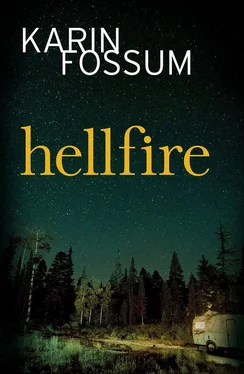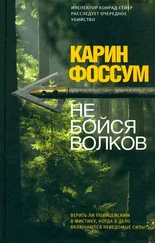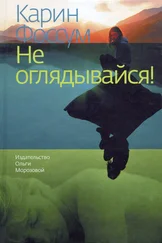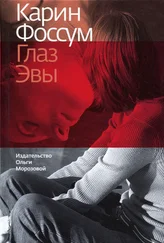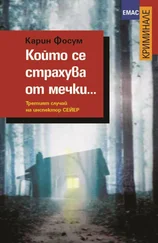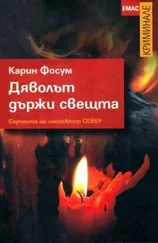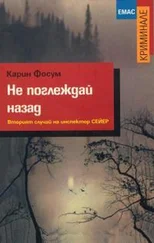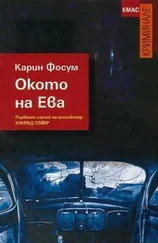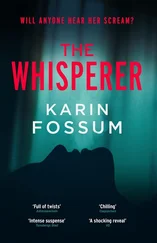“Can I sleep here tonight?” he said suddenly. “I want to sleep in the tent.”
“But the floor’s stone hard; that won’t be very comfy, will it?”
Simon was adamant. After his evening snack, he went to the bathroom and brushed his teeth very carefully. Bonnie got his comforter and pillow, found the cushions from the garden furniture in the cupboard, and then crawled into the tent and made up a simple bed for him. He said goodnight and crept in, lying on his side with a hand under his cheek. She could see the beam from the flashlight through the sheets. She then sat down in front of the TV and watched the news. She knew that he wasn’t asleep, but she pretended he was. We’ll get by, she thought, comforting herself. I must thank Erna. I suppose she’ll pooh-pooh it because that’s just the way she is.
She turned the TV off at ten o’clock. Simon had switched off the flashlight and she sat there listening. She smiled at the thought that he was lying there holding his breath, because he was listening too. Then she got up and turned out the light, thinking as she did that it would now be pitch-black in the tent. But he had asked to sleep there, inside the warm den with all the cushions. She went into her bedroom but left the door ajar. She lay in bed listening for a long time because she knew that he’d be there soon enough. He wouldn’t want to go to his own room. He would creep in when he thought she was asleep, and she would hold open the comforter for him and hug him to her.
The dog, Frank, lay down under the desk, where he had an old comforter. But before lying down, he turned around and around, making a kind of nest. Sejer went over to the window. From his office, he had a view of the river, which was now busy with big and small boats and the odd keen kayaker. He spotted a family of swans and an old man feeding bread crusts to the ducks, and he saw some children swimming in the strong ice-cold current.
Sejer was fifty-five, but women still turned to look at him when he walked through town. He was tall, lean, and gray with strong features. He knew that he would have to step down in a few years — that others were waiting, ready to take over. The thought of being retired irritated him beyond reason. What was he going to do? Sit on the balcony with a generous whiskey? Listen to Monica Zetterlund and go for walks with Frank? He crossed the room and sat down at the desk. He opened the top drawer and took out a pile of photographs of the two victims, the mother and child. He knew that the pictures would plague him; they would reappear in his thoughts when he was old. The first photograph showed the old trailer from a distance. It was white with a dark stripe under the window and the name Fendt written in silver letters across the back. A couple of the Poles who worked on the farm had slept in it in the past. Now it was too dilapidated, and this year they were staying in one of the outbuildings, where there was room for four. They came in May every year and went home again in November. Sejer had never owned a trailer. He had a cabin on Sandøya and spent a few weeks there every summer, but he had always thought that trailers were a good idea. A little house on wheels, with the people inside them like snails, happy to be on their way to the sea and sun and summer. He would never think like that again. From now on, whenever he was driving behind a trailer, he would think about the woman and her child.
Somewhere a killer was sitting, waiting for his pursuers. Or he might be standing by the window looking out. Or following the news, perhaps discussing the case with his neighbors. He was most likely over twenty, and possibly under forty, but almost certainly of Norwegian descent. It was in all likelihood his first murder. All the same. He had without a doubt some behavioral disorder, although that would not necessarily be apparent to those around him. Perhaps he had a job, perhaps not. Family? No, he didn’t think so. Nor any close friends. And he was pretty sure the man would have had some previous contact with a psychiatrist.
Sejer was still of the view that the murders had been planned because nothing of value had been taken from the crime scene. The killer had made no effort to remove any clues. The knife was left lying on the floor. The deed had perhaps given him some kind of satisfaction, and he was less bothered about what happened afterward. His mission was accomplished, whatever it was. To punish them or to get rid of them. He had walked across the fields with awful intent. In his hand, presumably the right hand, he had carried a knife. He had approached the woman and child with determination. Perhaps the door had been left open — it was warm. Maybe the woman had looked out of the doorway to see who was coming. Maybe nothing had been said. Maybe he’d just forced his way in, thrown them to the floor, and killed them in cold blood. Or maybe it wasn’t cold at all, maybe his blood was boiling. No one had heard a thing. The farm was too far away. He must have been covered in blood but had obviously not met anyone. And Sejer guessed he had come from Haugane or Geirastadir.
Frank chewed the toe of his shoe; he wanted attention. Sejer leaned over and patted him on the head.
“Soon,” he said. “I’m busy right now.” He moved on to the next picture. The forensics technician had taken it from the doorway, looking in at the two victims. Even the torn curtains were sprayed with blood. Some bloody playing cards lay on the small table; they might have been playing Crazy Eights, if the boy was old enough to understand the rules. On the countertop: a handbag, an empty pizza box, and a bunch of wildflowers. At the other end of the trailer, two beds had been made up on the narrow sofas. Flowery comforters and pillowcases, and a teddy bear in one. He looked at the next photographs. The first was of the child, lying on his back. His tracksuit, which was red, white, and blue, was far too big for him and lay in folds. He had blond curly hair and his sneakers looked new. There were no wounds on his hands or arms to indicate that he’d tried to protect himself; he hadn’t had time. Sejer thought the child had been killed first, as his body was closest to the door. The next picture was of the woman, who was the child’s mother. There were just the two of them, Bonnie and Simon Hayden. No father who lived with them, no brothers or sisters. The mother was also blond, but she didn’t have curls, so perhaps the child had inherited his mop from his father. Her white summer dress was wet and stained with blood from the stab wounds. Sejer looked next at the close-ups, which were taken under the instruction of Bardy Snorrason, who was responsible for the autopsy. Her feet were bare, the toenails painted. On and on through the photographs, until finally he sat staring at the last one. The worn gray linoleum floor covered in considerable amounts of blood. And over by the countertop, a clear footprint. He studied the picture, holding it up to his eyes. This, he thought, is all we have for the moment.
He leaned back in the chair to process the images. Frank started to chew the toe of his shoe again and there was a knock at the door. Snorrason came in with the forensics report. He was also close to retirement age. He gave Frank a pat and pulled out a chair, putting down a pile of paper with dense text on the desk in front of him.
“The preliminary report,” he said. “I’ve been thorough.” Sejer started to read the report while Snorrason sat beside him and commented on the findings.
“The boy, Simon, had four stab wounds. All to the stomach so he presumably bled to death. And, sadly, it may have taken some time. His mother, Bonnie, was also stabbed four times — he made quick work of it. Once through the carotid artery, so her death would have been swift. The three other wounds were to vital organs: the heart, liver, and kidneys. And then the gash by her mouth — he slashed her face. What are your thoughts so far?” The Icelander looked at the inspector.
Читать дальше
